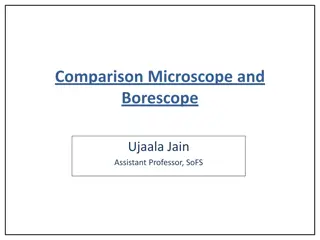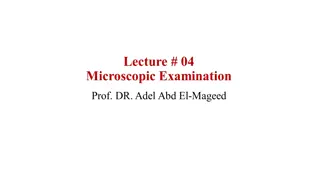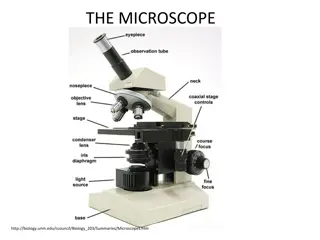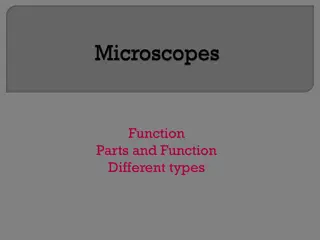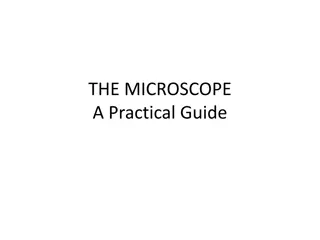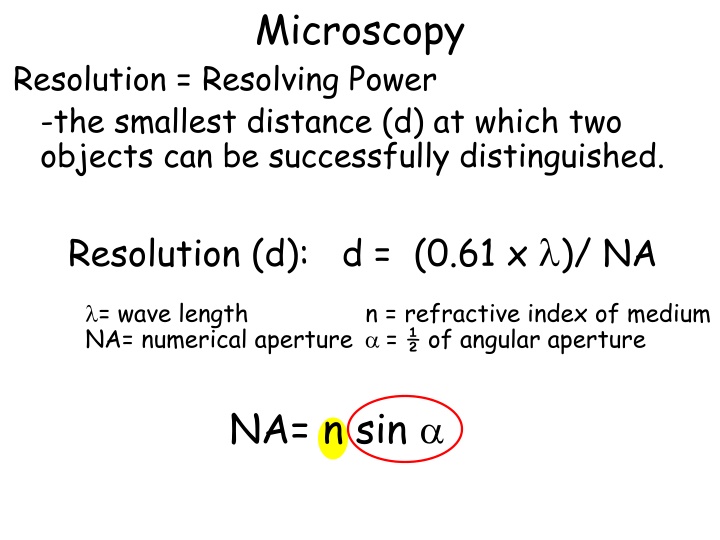
Microscopy Resolution and Object Distinction
Learn about the concept of microscopy resolution, the factors affecting it, and how objects can be distinguished based on resolving power. Discover the importance of numerical aperture and refractive index in achieving sharper images with different objective lenses.
Download Presentation

Please find below an Image/Link to download the presentation.
The content on the website is provided AS IS for your information and personal use only. It may not be sold, licensed, or shared on other websites without obtaining consent from the author. If you encounter any issues during the download, it is possible that the publisher has removed the file from their server.
You are allowed to download the files provided on this website for personal or commercial use, subject to the condition that they are used lawfully. All files are the property of their respective owners.
The content on the website is provided AS IS for your information and personal use only. It may not be sold, licensed, or shared on other websites without obtaining consent from the author.
E N D
Presentation Transcript
Microscopy Resolution = Resolving Power -the smallest distance (d) at which two objects can be successfully distinguished. Resolution (d): d = (0.61 x )/ NA = wave length NA= numerical aperture = of angular aperture n = refractive index of medium NA= n sin
NA= n sin Refractive index ( ) of different media Air=1.0003 Water=1.33 Immersion Oil=1.515
Resolution versus Wavelength Resolution: d= 0.61 x NA Wavelength (nanometers) 360 400 450 500 550 600 650 700 Resolution (micrometers) .19 .21 .24 .26 .29 .32 .34 .37
Resolving Distance (d) Human eye Light Microscope Scanning Electron Microscope Transmission Electron Microscope 2.5 nm 1.0 nm 0.2 mm 0.2 um Resolution: d= (0.61 x )/ NA HistoTip: Avoid confusion when discussing resolution. Increased resolution or resolving power usually means a SMALLER value of d (distance).
PROBLEM: Objective lens A: Magnification = 40X N.A. = 0.45 Objective lens B: Magnification = 40X N.A. = 0.80 -->Which objective lens would give the sharper image and why?



